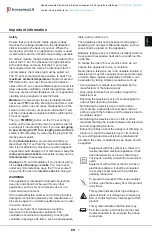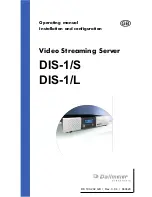
Warnings
Safety regulations require that the unit should be
returned in its original condition and that
components identical to the original components
are used. The safety components are indicated by
the
2.
3.
4.
5.
6.
7.
8.
9.
10.
11.
12.
In order to prevent damage to
and transistors,
all high-voltage fiashovers must be avoided. In
order to prevent damage to the picture tube, it
should be discharged using the method shown in
Use a high-voltage probe and a multimeter
(position DC-V). Discharge until the meter reading
is OV (after approx. 30s).
ESD
All
and many other semiconductors are
sensitive to electrostatic discharges
Careless handling during repair can drastically
shorten their life. Make sure that during repair you
are connected by a pulse band with resistance to
the same potential as the earth of the unit. Keep
components and tools also at this same potential.
When repairing a unit, always connect it to the
mains voltage via an isolating transformer.
Be careful when taking measurements in the
voltage section and on the picture tube.
Never replace modules or other components while
the unit is switched on.
It is recommended that safety goggles are worn
when replacing the picture tube.
When making settings, use plastic rather than
metal tools.
This will prevent any short circuits and the danger
of a circuit becoming unstable.
After repair the wiring should be fastened once
more in the cable clamps for this purpose.
In order to prevent measuring errors, the heat sinks
should not be used as reference points for
measurements.
The heat sink for the sound output amplifier (next
to the channel selector) is connected to the -16
or -12 volts.
Together with the deflection unit and any multipole
unit, the flat square picture tubes used form an
integrated unit. The deflection and the multipole
units are set optimally at the factory. Adjustment
of this unit during repair is therefore not
recommended.
The high-voltage cable in 21” units is glued in the
line output transformer. This can therefore not be
replaced.
2.
3.
4.
5.
6.
7.
8.
9.
The cold chassis direct voltages and oscillograms
should be measured with regard to the tuner
earth (A). Voltages on the line mains side
of the SOPS transformer 5625 should be measured
with respect to
The direct voltages and oscillograms given in the
diagrams should be measured in the service default
mode (see section
A
bar signal,
modulated on a picture carrier wave of
475.25 MHz, should be used as the video signal. A
1
signal should be used for the sound (for all
systems).
Where necessary, the oscillo rams and direct
4
voltages are measured with
and without aerial
signal(x). Voltages in the power supply section
are measured both for normal operation
and in
standby
These values are indicated by means
of the appropriate symbols.
The picture tube PCB has printed spark gaps. Each
spark gap is connected between an electrode of
the picture tube and the Aquadag coating.
The semiconductors indicated in the circuit diagram
and in the parts lists are completely
interchangeable per position with the
semiconductors in the unit, irrespective of the type
indication on these semiconductors.
The connectors used for the modules (board to
board) are gold-plated and should only be replaced
by the same type.
In the case of fault finding and/or repair to the
teletext module, the accessibility of the circuit and
the components can be increased by using
extension cards.
The order numbers of these extension cards are:
l
6 times: 4822 395 30259
8 times: 4822 2 14 3 1402
Both multisystem and single system units are
mentioned in this documentation.
The term multisystem unit is used to refer to a unit
that is suitable for the reception of PAL BGI and
SECAM BGLL’ systems.
A multi-system set for Eastern-Europa is suitable
for the reception of the PAL/SECAM BGDK
systems. The term single system unit is used to
refer to all other units (such as PAL BG,
PAL/SECAM BG and PAL I units).
Blackline units can be recognized by the thick,
protected high-voltage cable. Non-blackline units
have a thin, unprotected high-voltage cable.
Fig. 3.1
PCS 59 735






































